Ahmedabad, the vibrant city in the heart of Gujarat, India, boasts a rich cultural and historical heritage that dates back centuries. The city, founded in the 15th century by Sultan Ahmed Shah, has witnessed the ebb and flow of empires, the rise and fall of dynasties, and the evolution of diverse communities. One of the best ways to delve into Ahmedabad’s storied past is through the Ahmedabad Heritage Walk, a captivating journey that meanders through the city’s ancient streets and unravels its tales.
Route and Starting Point
The Heritage Walk typically begins at the Kalupur Swaminarayan Temple, a sacred site for the Swaminarayan sect and an architectural marvel in itself. From here, the route winds through the labyrinthine lanes of the old city, revealing historical treasures at every turn.
Swaminarayan Akshardham
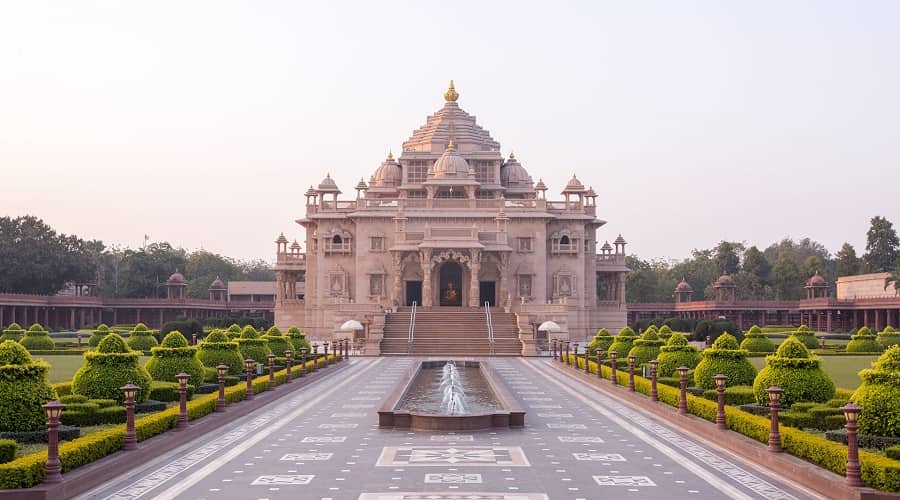
The final leg of the Heritage Walk concludes at the Swaminarayan Akshardham complex. This modern marvel, inaugurated in 2012, serves as a spiritual and cultural center dedicated to Bhagwan Swaminarayan. The intricately carved pink sandstone structure stands in stark contrast to the historical sites visited earlier, showcasing the city’s continuous evolution.
The Akshardham complex not only houses a breathtaking temple but also includes a cultural exhibition that narrates the life and teachings of Bhagwan Swaminarayan. The beautifully landscaped gardens and the peaceful surroundings provide a serene environment for reflection and introspection.
Bhadra Fort and Teen Darwaza
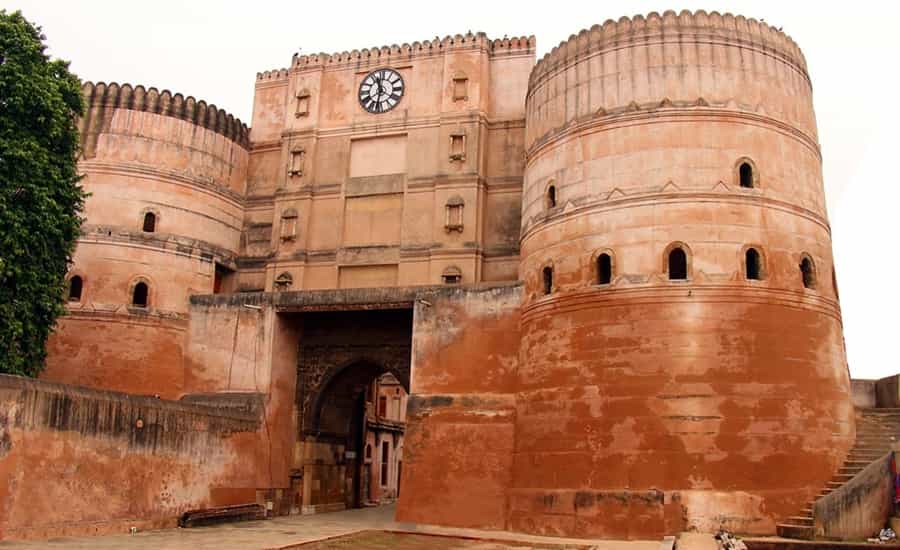
Moving forward, the Heritage Walk leads to Bhadra Fort, an ancient citadel with a history dating back to the 15th century. The fort houses the grand Bhadrakali Temple, built in honor of the Hindu goddess Bhadrakali. The adjacent Teen Darwaza (Three Gates) is an imposing structure that once served as the royal entrance to the Maidan Shah, a vast open space where royal events and ceremonies took place.
Ahmed Shah’s Mosque
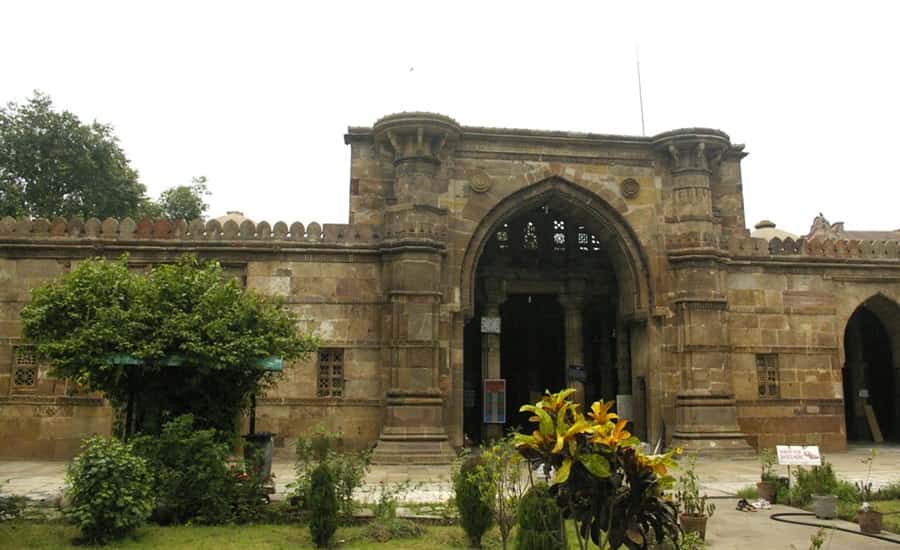
As the Heritage Walk continues, participants encounter Ahmed Shah’s Mosque, a testament to the city’s founding ruler. Built in 1414, this mosque is an architectural marvel featuring intricate stone latticework and a peaceful courtyard. The simplicity of the design reflects the ethos of the time.
Sidi Saiyyed Mosque and its Famous Jali
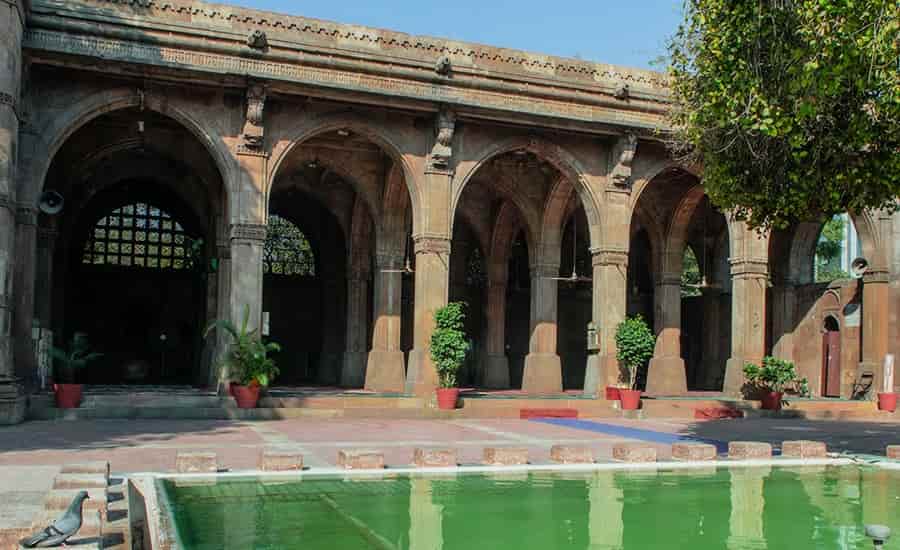
A short walk from Ahmed Shah’s Mosque brings the participants to the iconic Sidi Saiyyed Mosque. The mosque is renowned for its stunning lattice work, particularly the celebrated Sidi Saiyyed Ni Jali, a delicate stone screen that has become a symbol of Ahmedabad. The intricate meshwork of intertwined trees and foliage is a masterpiece of Indo-Saracenic architecture.
Pols of Ahmedabad
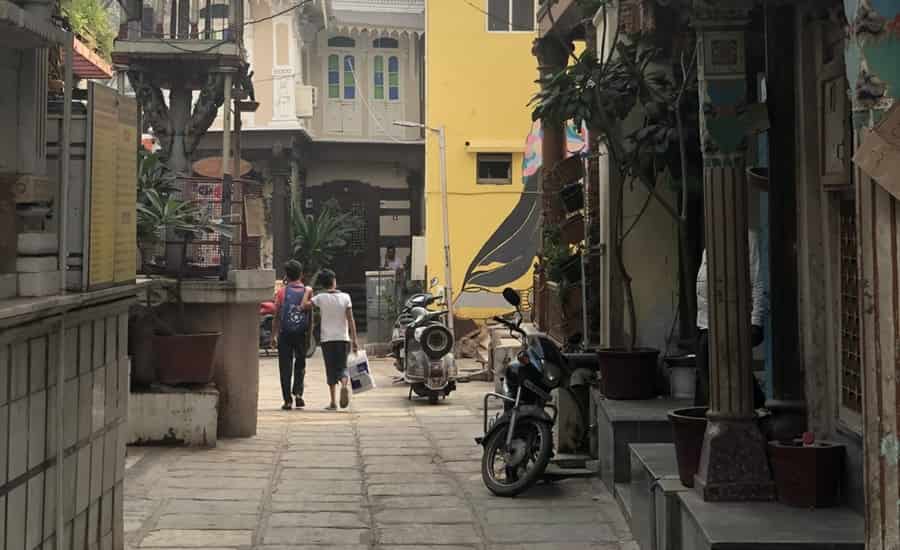
The Heritage Walk then winds through the Pols, the ancient residential quarters of Ahmedabad. These Pols are characterized by narrow lanes, secret passageways, and intricately carved wooden facades. Each Pol has its own unique charm, and exploring them provides a glimpse into the communal living and vibrant cultural life of the city.
Hathee Singh Jain Temple
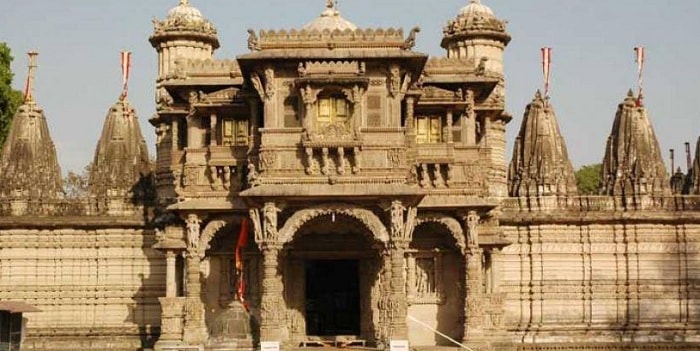
The Heritage Walk takes a spiritual turn as it leads to the Hathee Singh Jain Temple, an architectural gem built in 1850. The temple, dedicated to the 15th Jain Tirthankara, is known for its elaborate carvings and stunning architecture. The delicate detailing on the marble is a testament to the skill of the craftsmen of that era.
Jhulta Minara (Shaking Minarets)
A mysterious and intriguing stop on the Heritage Walk is the Jhulta Minara, or Shaking Minarets, located at the Sidi Bashir Mosque. These minarets are known for their unique architectural feature – when one minaret is shaken, the other vibrates in tandem. The exact mechanism behind this phenomenon remains a mystery.
Dada Hari Ni Vav
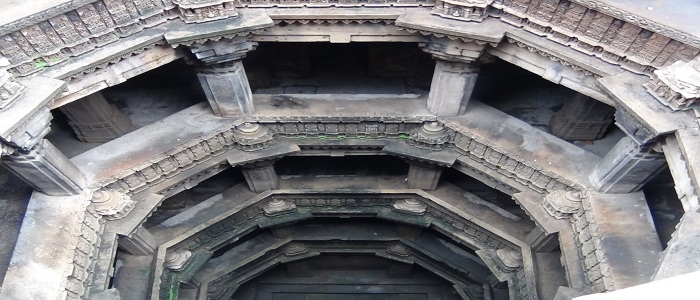
The Heritage Walk concludes with a visit to Dada Hari Ni Vav, an ancient stepwell that served as a source of water and a place for social gatherings. The stepwell’s intricate carvings, galleries, and well-preserved architecture make it a fascinating glimpse into the city’s water management practices and community life.
Manek Chowk and its Night Market
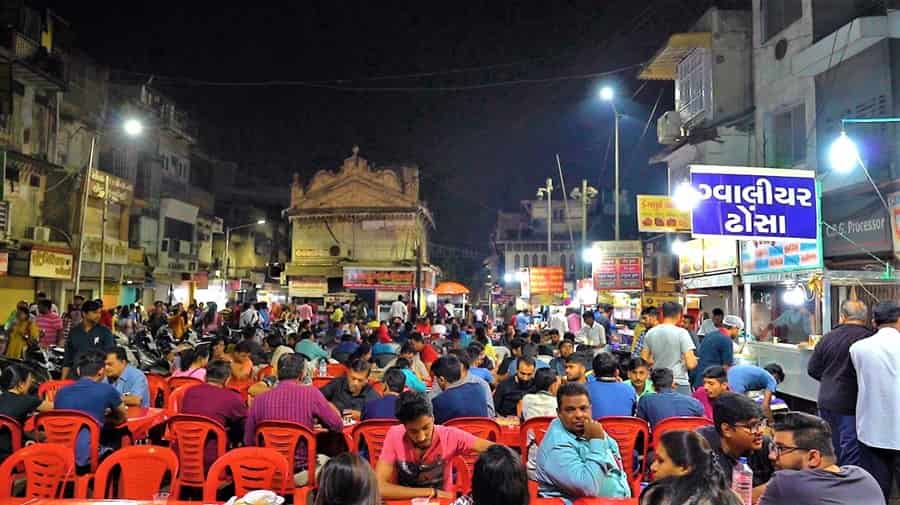
After the historical exploration, the Heritage Walk takes a delightful turn towards Manek Chowk, a bustling square that transforms into a vibrant night market after sunset. Originally a vegetable market in the morning, Manek Chowk undergoes a magical transformation into a street food haven in the evening. The tantalizing aroma of local delicacies fills the air as vendors set up their stalls, offering everything from traditional Gujarati snacks to international cuisines. Participants can savor the flavors of Ahmedabad, indulging in favorites like dhokla, fafda, and the famous Gujarati thali.
Conclusion
The Ahmedabad Heritage Walk, with its diverse array of historical, cultural, and culinary experiences, offers a holistic view of the city’s past and present. From the ancient architecture of mosques and stepwells to the lively atmosphere of Manek Chowk and the spiritual ambience of Swaminarayan Akshardham, participants embark on a journey that transcends time.
This immersive exploration not only deepens one’s understanding of Ahmedabad’s rich heritage but also fosters a sense of connection to the vibrant tapestry of Indian history. As the Heritage Walk concludes, participants carry with them not just memories of ancient structures but a profound appreciation for the resilience and continuity of Ahmedabad’s cultural legacy.
In the heart of this bustling metropolis, the Heritage Walk serves as a bridge between the past and the present, inviting both locals and visitors to become a part of Ahmedabad’s ongoing narrative. It is a celebration of the city’s diverse heritage, a testament to the craftsmanship of its artisans, and a reminder that history is not confined to textbooks but is alive and well in the streets, architecture, and culture of this dynamic city. Ahmedabad’s Heritage Walk is more than a guided tour; it is an invitation to walk through time, appreciating the myriad stories etched in its walls and streets, and embracing the spirit of a city that has truly stood the test of time.
Popular Tour Packages
